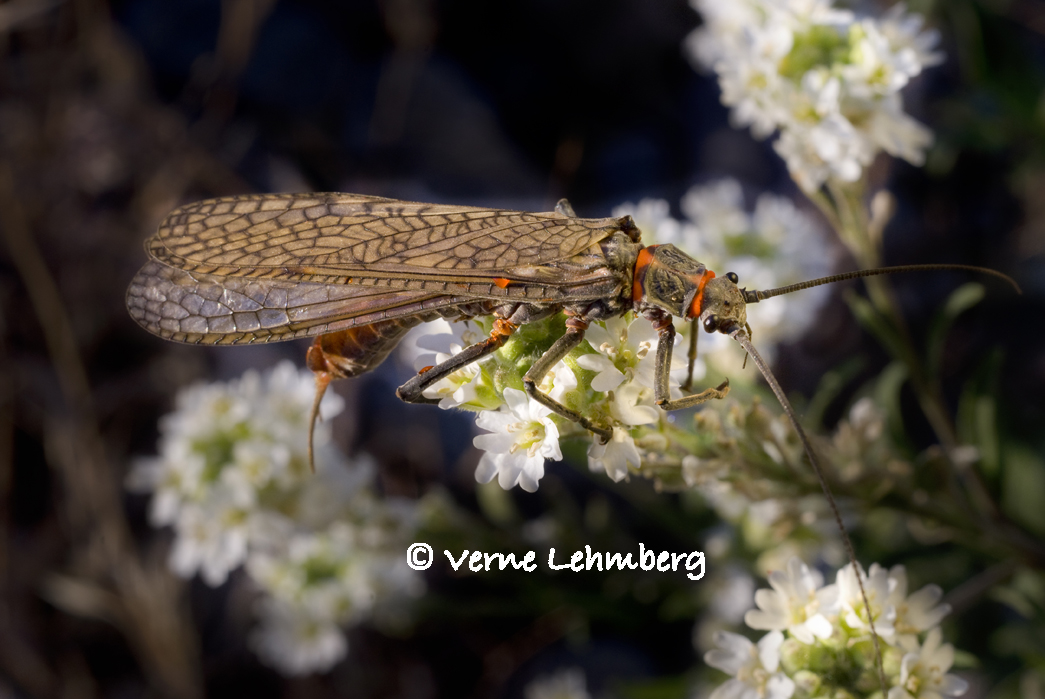
by Judy Lehmberg, BioPics Photography, www.vernelehmberg.com (25% off sale of all photos for a limited time if you use the code “4000likes” without the quotation marks)

This particular salmonfly, or stonefly, is Pteronarcys californica, one of the largest aquatic insects around. It is exciting to fly fishers when they hatch because it means every big trout in the stream is going to be up looking for them.

The California Stonefly females can get up to three inches long. The males are smaller, but it takes less room to carry sperm than it does eggs. The females lay eggs by repeatedly dabbing their abdomen in fast moving water. Once the eggs hatch they become a nymph that can live in the water three or four years.

When the nymphs are ready to transform into adults they crawl to the shoreline and split open their exoskeleton. The newly hatched adult sits for a few hours drying its wings and then walks or flies off in search of a mate. Once they mate the female returns to the stream to lay eggs and the whole process starts over.

California Salmonfly Emerging From Its Nymphal Exoskeleton
If you are in Yellowstone go to La Hardy Rapids on the Yellowstone River. Look at the base of the trees near the river and you will see hundreds of discarded salmonfly exoskeletons. You will also see salmonflies flying around, especially in the late afternoon. If one lands on you let it walk around for a while. They don’t bite but they do kind of tickle. Walk downstream a little way and you may be lucky enough to see a cutthroat trout catching their favorite meal, a California stonefly.







Your pictures are absolutely gorgeous ! Even if they are of flies ! lol
Sitting in Canyon, waiting for my clothes to wash and for your photos to upload with the slow internet, and thinking how lucky we are to have you sharing these fascinating stories with us. Thank you Judy.
Thank you Deby. I like it, it gives the biology teacher in me something to do, but I don’t have to stick to a syllabus. That makes it fun!
Yet again a great article with wonderful photos. Thank You
Thank you Barbara.
Found one on the Madison two weeks ago before the guide or my fisherman hubbie. 🙂
Interesting article. Are these in Yellowstone most of the summer Judy, or just for a short time? We are hoping to do some fishing while we’re there next year so I was just wondering.
Enjoyed the pics of the different stages. Thanks, hope to see them some day.